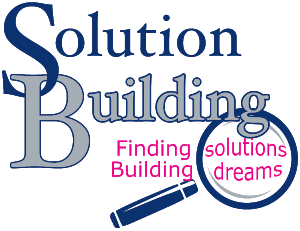It’s Up to You to Take Control
We like being in control of our lives, but most people feel like they aren’t. I contend that we all have more control than we think we do.

Control doesn’t mean you control everything that happens. It means you confidently move forward with your goals and priorities, understanding that there are things that happen that are beyond your control.
This means that you are clear about who you are and what you want. It requires you to take intentional action.
You have the superpower of choice, but you have to use it.
This control starts with being aware that this is possible and understanding what it is and how to get it. Then you have to decide you want control and take intentional action to get it.
Here are 11 small intentional actions that will help you get control:
- Clarify your core values and beliefs – Chasing other people’s dreams will pull you in a million different directions. Taking control of your life requires you to be clear on what you want.
- Identify internal vs. external motivations – Internal motivators come from within – those dreams that fill you with passion and purpose. They’re determined by your own values and goals. External motivators come from outside of yourself. They refer to the goals and expectations set by your parents, partners, friends, or community. They can also be standards set by society that you feel pressure to live up to.
- Create a vision – Visualization fills your mind with a picture of what you want your life to become.

- Believe that you can: Overcome limiting beliefs – Most people have an internal dialogue. Many times, this thinking comes from an earlier part of your life. It’s that voice of a parent who didn’t give you enough praise, or that kid in school who was always waiting for you to mess up.
- Take personal responsibility – Regaining control of your life means finding the balance between what you can and cannot control and taking responsibility for the things you are responsible for.

- Let go of what you can’t control – God, grant me the serenity to accept the things I can’t change; the courage to change the things I can; and the wisdom to know the difference.
- Respond instead of reacting – You can’t control everything. But you can control how you respond. Don’t react to situations without thinking first.
- Unpack emotional triggers – Self-awareness will help you manage your emotional reactions. When you know your fears and identify situations that make you feel anxious you will be better prepared to control them.
- Make a plan of action – Many people get stuck talking about their dreams and never do anything about them. Often we’re waiting to feel inspired. The truth is, inspiration comes through action.

- Implement a daily routine – Daily planning helps you get and stay focused on what matters to you the most. It helps keep you on track, removing opportunities for getting caught up in unimportant tasks.
- Know when to take a break – Control doesn’t mean cramming in as many tasks as possible in one day. You need to create a balance that works for you.
Implementing these eleven things will help you take control of your life and business.
It’s up to you to take control!
Over the past few months, I’ve written a lot about taking control of your life and business. Here are some of those posts:

If you would like help finding solutions for taking control of your life and business schedule a free 30-minute coaching consultation.






































